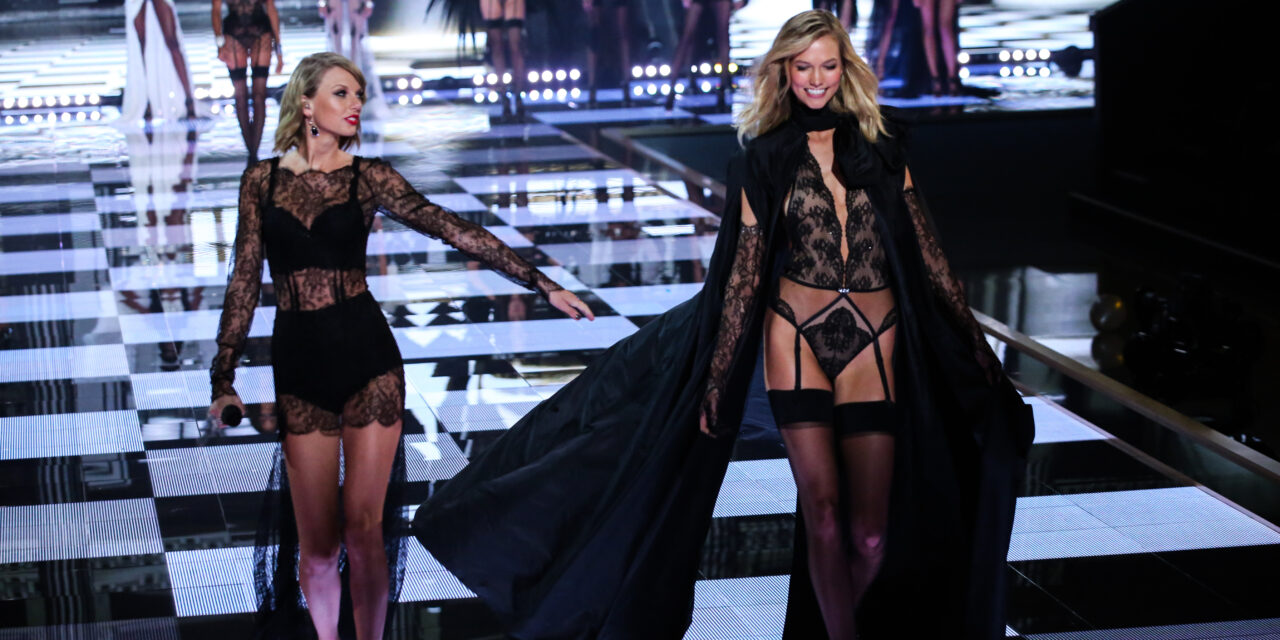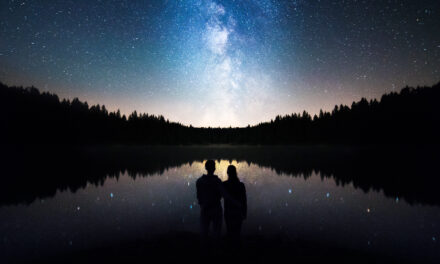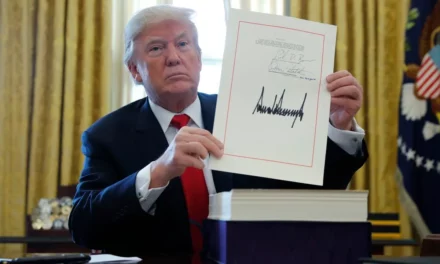Taylor Swift has been one of the biggest names in the music industry for over a decade. In the last three years alone, she released two new albums and two re recordings, won best pop vocal album, and made her directorial debut with her short film “All Too Well.” Taylor Swift is known as many things – artist, songwriter, executive producer – and sapphic inspiration.
With her tenth studio album “Midnights” set to release this October, fans are not only speculating about the soundtrack, but also Taylor Swift’s sexuality. The Gaylor fan theory has taken over Tik Tok and Twitter, making headlines as fans across the spectrum debate if Taylor Swift is queer.
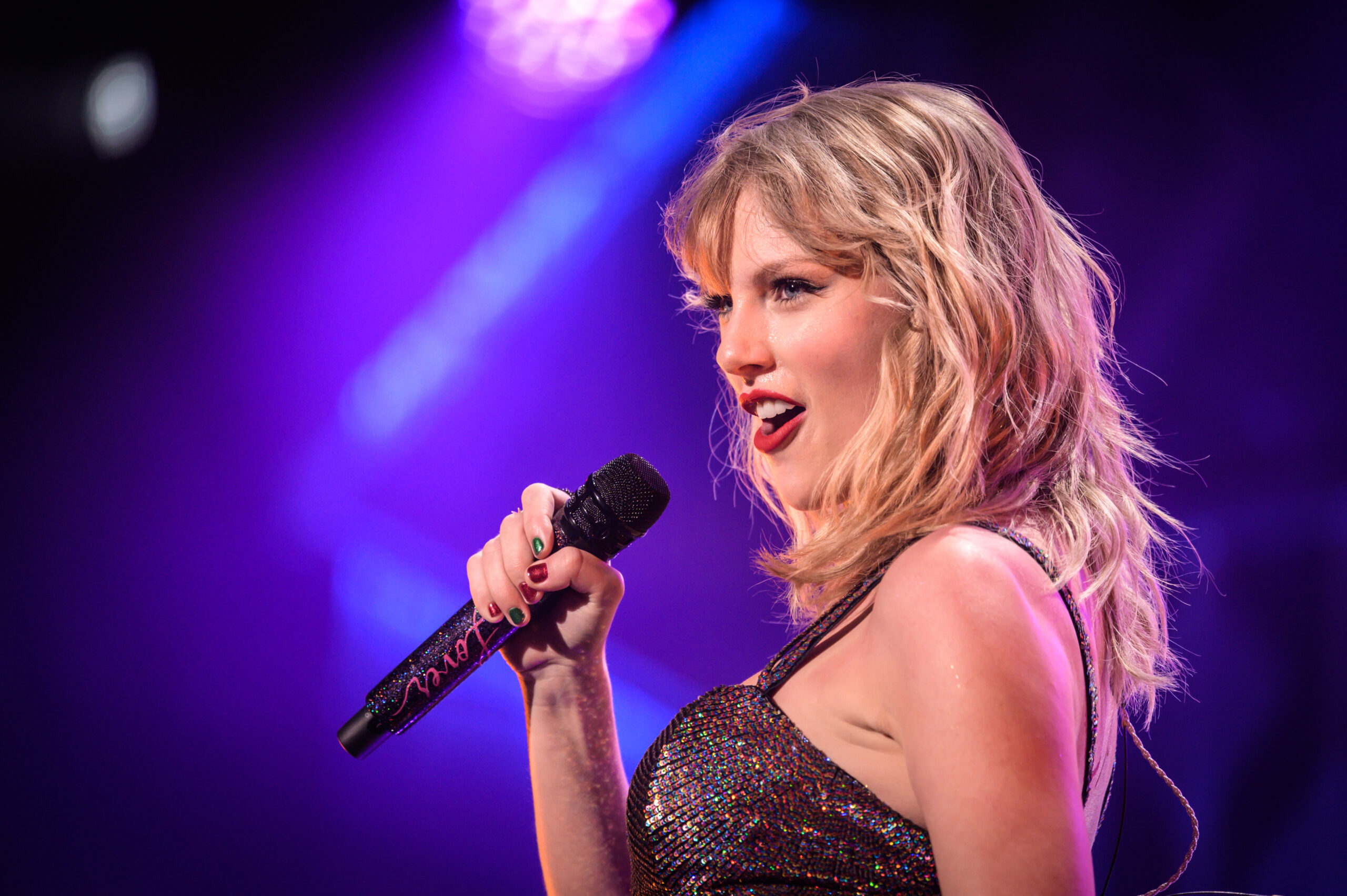
I’m all for embracing sexuality, no matter who you bring into the bedroom. Admittedly, I also love a bit of gossip. But does questioning someone’s sexuality take things too far? And what does it mean for queer people as a whole?
I’ll share my opinion, but let’s get into the details first.
What is “Gaylor” and Why Does It Matter?
As I mentioned before, Gaylor refers to the theory that Taylor Swift is part of the LGBTQ+ community. The theory assumes Swift is closeted and hints at her queerness through her songs and the easter eggs she famously hides in her social media posts and music videos.
Alternatively, “Gaylors” are the fans who either ascribe to the theory or are queer and find sapphic themes in her lyrics.
There are several versions of the queer theory. Some fans believe that Swift is bisexual or pansexual, acknowledging that her public relationships with men, including her long-term boyfriend (possibly fiance) Joe Alwyn are authentic. Others believe that Swift’s relationships with men are strictly PR and that her true relationships with women are kept secret.
This theory first emerged during the Speak Now era (circa 2010) but gained traction during the Reputation years when her female friendships were widely posted and featured in the “Bad Blood” music video.
The release of sister albums Folklore and Evermore in 2020 reignited the theory. These albums feature songs from third-party perspectives, unlike the real-world, personal lyrics fans of Taylor Swift were familiar with. Many question how removed Swift is from the queer themes found in these albums.
But why does any of this matter? Celebrities – especially Taylor Swift – frequently have their personal lives dissected by the masses. Why should this be any different?
The treatment of Taylor Swift speaks to the culture surrounding women’s sexuality, particularly queer women. From a young age, every romantic move she’s made has been scrutinized and critiqued, simply because Taylor embraced her sexuality and autonomy. The way her relationships are spoken about reflects how we discuss those topics in our day-to-day lives.
The Gaylor theory illustrates several cultural issues: the need for sexuality to be labeled, the sexualization of platonic same-sex relationships, and the longing queer people feel to be represented, to name a few. In the end, the implications of the theory run deeper than a tabloid cover or Rolling Stone story.
However, any good theory needs evidence to stay afloat, and fans are willing to fill every blank space.
The Evidence For Taylor’s Version of Queerness
If Taylor Swift fans are good at anything, it’s reading into the details. From front page female friendships to lyrical love triangles, this theory has it all.
Secret Sapphic Romance?
In the late 2000s onward, tabloids plastered Swift’s face onto every cover. As she evolved from her country beginnings, the media latched onto any intrigue they could find – her botched acceptance speech, high school crushes, and eventually, celebrity relationships.
Although you’ve probably seen pictures of Swift with famous male partners at your local Dollar General, Gaylors believe that she was cozying up with female love interests behind the scenes.
The first romance fans cite is Glee actress Dianna Agron. She met Taylor Swift in 2011, not long after Swift released her third album Speak Now. The pair became friends, and rumors of a secret romance spread about the two, even being brought up in late night television.

As for the evidence, most fans cite the song “Wonderland” from Swift’s 1989 album. The love song gained attention because Agron famously had an Alice in Wonderland tattoo at the time.
The most popular more-than-friend theory in Taylor Swift’s friendships is Karlie Kloss. Kloss met the Fearless singer at the 2013 Victoria’s Secret Fashion show, and the friendship turned pretty intense from there.
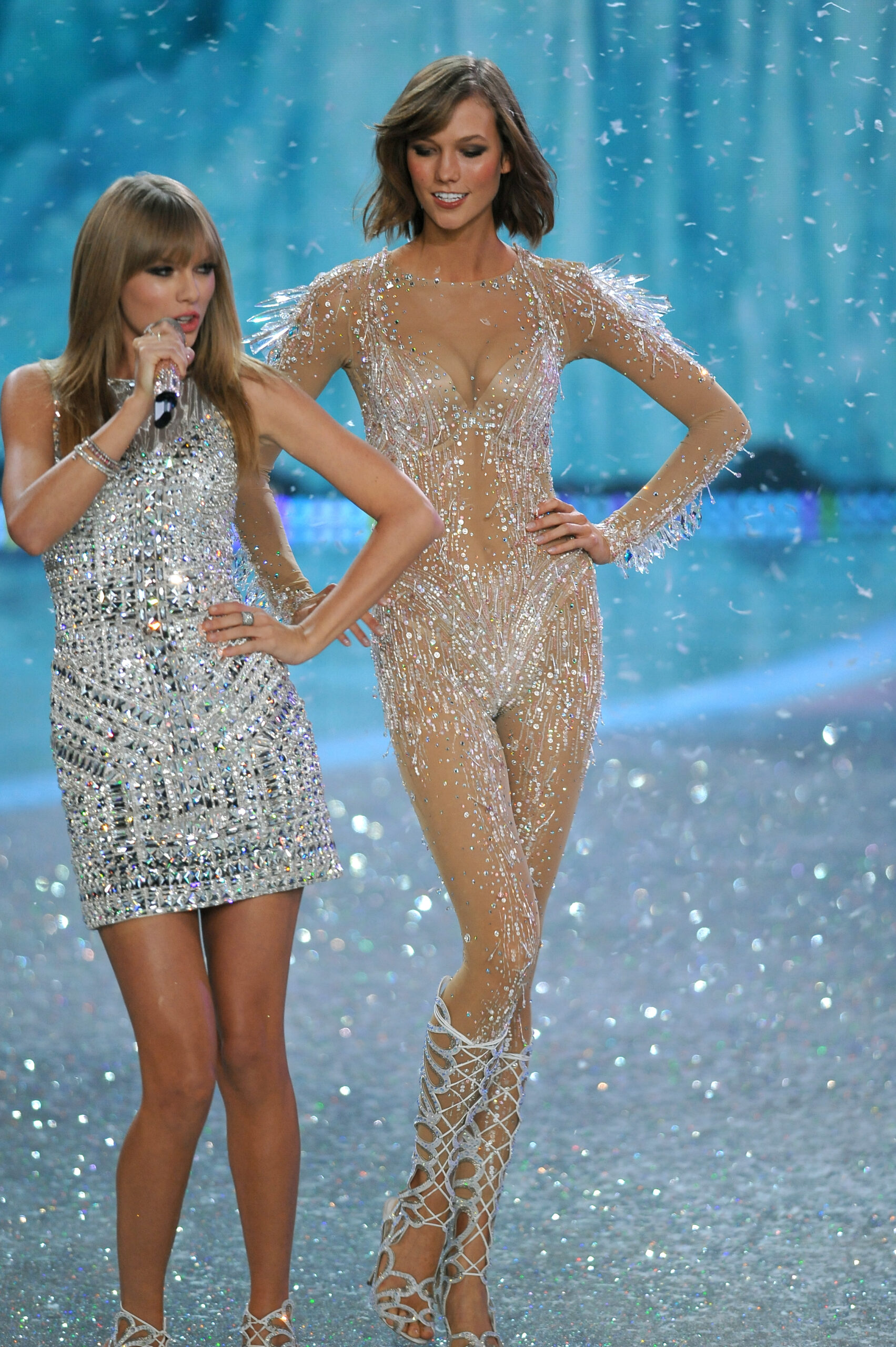
Dubbed “Kaylor” by fans, Swift and Kloss were frequently photographed together and appeared on each other’s social media throughout 2014 and 2015. The pair even interviewed together with Vogue.
Swift’s album Reputation plays with themes of betrayal, anger, and fraud, but fans speculate on her muse for its sexier, romantic songs. Although many think Taylor Swift wrote songs like “Call it What You Want” and “Delicate” for Joe Alwyn, Kloss could have been the inspiration instead.
However, the song most attributed to Kloss is “Dress,” the sexiest soundtrack on Reputation. Taylor even said in an interview that she was embarrassed for her father to hear it.
Carve your name into my bedpost
Cause I don’t want you like a best friend
Only bought this dress so you could take it off
Whew.
Queer Subtext in Songs
Fans have mapped out the Gaylor Theory through various videos and threads, often citing her lyrics as proof of her queerness. With over a million copies sold (often in the first week) across albums, interpretations abound.
Taylor Swift wrote two songs that overtly reference gay relationships. Her song “Welcome to New York” is the first track of 1989, and verses openly celebrates same-sex love.
And you can want who you want
Boys and boys and girls and girls
Swift took her support for the LGTBQ+ community a step further on her album Lover. Her single “You Need to Calm Down” was written entirely about the acceptance of queer folk and the rejection of bigotry. Swift wore pink, blue, and purple in the music video, an alleged sign of her bisexuality. The music video featured also several prominent queer celebrities, including Rupaul, Billy Porter, and Haley Kiyoko.
In her documentary Miss Americana, Taylor Swift revealed that she faced pushback from her team on taking “political” stances, but Swift chose to use her voice for the queer community despite any negative implications. Fans claim her support is more than allyship, but Swift herself said she was “[advocating] for a community she wasn’t part of.”
According to Gaylor theorists, the bulk of the theory comes from her more subtle songs. Although evidence of Gaylor goes back as far as her first album, most direct focus on her most recent work, namely Folklore, Evermore, Fearless (Taylor’s Version), and Red (Taylor’s Version).
On her re-recording of Red, Swift released songs from the vault (songs that didn’t make the original album), and “The Very First Night” sounds like it was originally written for a female love interest.
Didn’t read the note on the polaroid picture
They don’t know how much I miss you
“You” doesn’t rhyme with “picture,” but you know what would? Her. Gaylors speculate Taylor purposefully changed the lyrics to shelter who the song was really about.
Although more subtext can be found in Red, Swift’s newer releases garnered more attention. Folklore songs “Cardigan,” “August,” and “Betty” featured a love triangle between what some think are three women, Betty, Augustine, and James.
Queer fans grew most attached to “Betty.” The song follows the artist begging for their love to take them back after a “summer thing” with another girl (Augustine). The characters are each named after Blake Lively and Ryan Reynold’s daughters, whom Swift is close with. Swift claimed the song is from a man’s perspective, but that doesn’t negate the deep attachment the LGBTQ+ community has to James, the teenager dreaming of their lover’s forgiveness, and girl-next-door Betty, the coveted object of their affection.
From Betty’s perspective
From Augustine’s perspective
From James’ perspective
Evermore also offers signs of girl-on-girl romance. A forbidden love story comes to life in “Ivy,” in which the musician is taken but pursues another relationship that overtakes her.
I’d live and die for moments that we stole
On begged and borrowed time
So tell me to run
Or dare to sit and watch what we’ll become
And drink my husband’s wine
One interpretation of “Ivy” is that two women are engaged in a lesbian love affair under the nose of the singer’s husband, whom she fears will find them out. While some believe this song accompanies Folklore’s Illicit Affairs, others think Taylor Swift took inspiration from Emily Dickinson, who is also speculated to be queer.
With so many of Folklore and Evermore’s stories centered on clandestine meetings and deep-rooted longing, it make sense that many queer women identify with her work. Part of Swift’s genius is that her writing style encompasses so many perspectives while still staying true to her sound.
Taylor Swift captures the female gaze so beautifully that her songs are queer anthems regardless of her sexuality. Clearly, her impact is clear even if her queerness isn’t.
Will Taylor Swift Come Out?
In the ongoing debate, the question appears repeatedly: if Taylor Swift is gay, why wouldn’t she come out? Well, the answer is complicated.
The Case for Coming Out
On one side of the argument, fans claim Swift would have already come out if she were queer. Not only has she already expressed her positive sentiments toward the community, but Swift would recognize the cultural impact her coming out would have. She would be encouraging generations of queer fans to embrace their truth and follow in her footsteps.
Additionally, some argue that Swift would never hide her sexuality from the people who respect and care for her. The Love Story singer is notoriously close with fans, engaging with them online and inviting them to album listening parties. It doesn’t jive with Taylor’s brand to keep such a vital part of herself secret, especially when her music is essentially a soundtrack for her life. The musician has a record of sharing personal stories through her songs.
However, Taylor Swift also likes to control the narrative surrounding her love life (don’t we all), so it’s possible she is simply biding her time. Already, fans are combing through her posts for any sign she will come out through her Midnights album this October.
The Case Against Coming Out
Despite Taylor’s authentic style, her queerness is something she may chose to keep to herself, and with reason. Her celebrity status would not protect her from the discrimination that queer folk face.
If Swift came out, her career as a musician would face setbacks. Some countries ban gay artists from entering their borders and censor their music. Not to mention, extremists would threaten her safety and livelihood. Even if Swift does belong to the community, it may not be worth the turmoil and public ridicule she would face.
Furthermore, Swift may see coming out as unnecessary. After all, no one ever has to release a statement saying, “hey, I’m straight,” so why do we expect queer people to do the same? Perhaps Swift has been involved with women before, but that doesn’t mean she has to contact the press about it.
Swift may also not be the type to label her sexuality. And who are we to force her hand?
My Opinion: Let Taylor Swift Breathe
Now that you’re familiar with the Gaylor theory and the details involved, we ask again: should we speculate?
As I said before, the conversation around Taylor Swift’s sexuality isn’t just about her – it represents the ideals and conventions around coming out and queerness in general. Sure, she’s a public figure, but she’s also entitled to her privacy just as we all are. No one wants a peeping tom in their bedroom window.
And hey, I get it. It’s exciting as a queer person to feel represented by someone so talented and so visible. Especially when that person can pick up a guitar and write your whole life out, like she saw the words in your heart even if you’ve never spoken them out loud (looking at you, “Tolerate It”).
Frankly, I’d be thrilled if Taylor Swift loved women, and I don’t blame anyone, especially queer folk, for being curious. With that being said, I think the deep dives and Twitter threads have become invasive. As a member of the Romantic Adventures team, I believe in compassion and respect for all, especially when it comes to one’s sexual preferences, and I don’t think Taylor Swift’s fanbase is wholly offering that to her.
Moreover, Swift’s sexuality does not dominate her identity, nor does it affect our ability as queer people to relate to the stories she shares through her music. I think we do her a disservice by dedicating our time to rooting through her personal life instead of appreciating the art she shares. I certainly wouldn’t want the entire town talking behind their hands about who I sleep with.
At the end of the day, Taylor will include us in the parts of her life she is comfortable with, and we should respect those boundaries just as we do with the people in our lives. In the meantime, we can make Midnights the soundtrack to our next love affair.
Taylor Swift captures the female gaze so beautifully that her songs are queer anthems regardless of her sexuality. Clearly, her impact is clear even if her queerness isn’t.

